STAR TREK: TOS - The Eugenics Wars, Volume Two Read online
Page 2
Lit from within, the translucent green dome glowed in the dark of night. The Columbus-2 rose until it was nearly a kilometer above the colony, then turned its prow toward the beleaguered dome. Struggling to maintain a stationary position above Paragon despite the powerful winds buffeting the shuttle, Kirk was alarmed to see that the massive biosphere looked severely injured by its partial exposure to the Class-K environment outside the dome. Although a faint blue aura still crackled intermittently over [10] maybe three-fourths of the living dome, indicating that the colony’s crippled force field had not yet collapsed completely, a large patch of the dome, at least two kilometers across, was blackened and blistered by what looked suspiciously like a third-degree burn. As Kirk watched in horror, the ugly discoloration spread outward, consuming more and more of the dome. Charred sheets of genengineered cellulose, the size of a ship’s bulkhead, flaked away from the dome, raining down upon the barren lava plains below. Thick green sap boiled and bubbled away, reduced to vapor by the tremendous heat. The damaged tissue swelled inwardly, forming a large, concave depression that threatened to tear apart catastrophically at any moment.
Kirk knew he had to act quickly. “Divert deflectors to the dome,” he instructed Lerner. “Try to patch the holes in the colony’s own force field.”
“Yes, sir,” Lerner said with a gulp. He carefully adjusted the shield controls and, seconds later, a luminous blue beam shot forth from the shuttle’s deflector array. At the speed of light, the beam crossed the distance between the Columbus-2 and the roof of the colony, focusing on the injured region of the dome. At first, the radiant energy didn’t quite mesh with the tattered remains of the colony’s disabled force field, but Lerner kept at the controls, a look of intense concentration on his face, until the outer edges of the deflector beam intersected with the expanding frontier of the blighted area. That’s it, Kirk thought, avidly watching to see if the extra shielding had any effect. Had the burning slowed its advance? Kirk thought so, perhaps. “Keep it up,” he advised Lerner.
[11] Easier said than done, Kirk realized. Lerner’s brow furrowed and he bit down on his lower lip as the security officer gave his full attention, and then some, to the challenge of implementing the captain’s plan.
Let’s hope he’s up to the job, Kirk mused. Lerner was an able crewman, but the captain couldn’t help wishing that Scotty were here in his place; if anyone could pull off the delicate task of supplementing the dome’s defenses with the shuttle’s own limited deflectors, then the Enterprise’s cagey chief engineer was the man Kirk would have preferred to tackle the job. Unfortunately, Scotty was still aboard the Enterprise, which couldn’t safely lower her shields while Koloth’s battle cruiser remained in the vicinity.
Not that the captain would have enjoyed asking Scotty to beam onto the shuttlecraft under these particular circumstances; the Achilles’ heel of Kirk’s plan was that, while the shuttle’s deflectors remained directed at the dome, the Columbus-2 had to survive the surrounding heat and pressure without any electromagnetic shields. Now, only the shuttle’s insulated bulkheads, duranium hull, and outer ceramic plating stood between the two men and the unrelenting wrath of Sycorax’s deadly climate.
“Here’s where we find out exactly what this bird is made of,” Kirk warned his copilot. The searing heat began penetrating the shuttle’s bulkheads almost immediately, rapidly raising the temperature within the cabin. Keeping one hand on the throttle while fighting the cyclonic winds shaking the shuttle from side to side, he tugged at the constricting collar of his dress uniform. The shuttle’s interior already felt like a Vulcan sauna; perspiration glued the back of his tunic [12] to his spine, while sweat streamed down his face. He licked dry lips, tasting salt.
Lerner looked just as hot and miserable. He wiped the sweat from his eyes with the back of his hand as he continued to make constant adjustments to the deflector controls. Kirk feared that both of them were on the verge of heatstroke.
The alarming sound of creaking metal filled the cabin, making Kirk wince in anticipation. Clearly, the overwhelming pressure outside was making itself felt upon the unshielded structure of the shuttle. Kirk knew they were in trouble; Starfleet shuttlecrafts were built to last, but the Columbus-2 couldn’t endure these conditions indefinitely, and neither could he or Lerner. The best he could hope to accomplish was to buy enough time for someone down in the colony to come to the rescue of the besieged dome.
But was there even a chance of repairing the dome in time? “C’mon,” Kirk muttered to the imperiled colonists down below, his sweat-slick hands struggling to maintain a firm grip on the throttle. “Show me just how genetically superior you all are!”
The command bunker was located a half kilometer beneath the colony proper, excavated deep into the bottom of an original volcanic crater. McCoy wondered how long they all could survive here if and when Paragon’s big green umbrella burst into flames? Not long enough, he thought morosely.
Regent Clarke and her top people had retreated to the bunker in order to coordinate their emergency efforts from a location of relative safety. McCoy had been brought along as well, although, since arriving at [13] the bunker, he had felt pretty much like a third wheel. Despite his persistent offers to help in any way possible, he had been politely rebuffed, then more or less ignored by the busy regent and her aides. Guess they figure that there’s nothing a plain, old, ordinary human being, with distinctly old-fashioned DNA, can do in a crisis.
“Typical,” McCoy groused. Although hospitable enough, there had always been something faintly condescending about the way Clarke and the other colonists had treated their visitors from the Enterprise, even before the current emergency erupted. McCoy had picked up on the regent’s mildly patronizing attitude almost as soon as he and the rest of the landing party had touched down on Sycorax, and so had, he suspected, Captain Kirk.
Still, the colonists hardly deserved the ghastly calamity befalling them now; McCoy wouldn’t wish this sort of catastrophe on a Denebian slime-devil, let alone a city of well-meaning (if insufferably smug) human descendants. Those blasted Klingons! he thought angrily Why can’t they ever take no for an answer?
Reduced to standing in an unoccupied corner, doing his best to stay out of the way, the frustrated doctor inspected his surroundings. Like the rest of the so-called Paragon Colony, where creative bioengineering was literally a way of life, the cramped bunker was furnished almost entirely with organic materials. Polished teak panels covered the walls while a dry, spongy material carpeted the floor. Even the desks and computer consoles at which the regent’s staff now anxiously worked appeared to have been crafted from some sort of petrified coral, with knobs, [14] switches, and keyboards made of polished bone or ivory. The overall effect was somewhat charming, McCoy granted; certainly it made the bridge of the Enterprise look cold and sterile by comparison.
On the other hand, decades of relentless focus on applied biological science had left the colonists backward in other respects. McCoy was a doctor, not a technician, but even he could tell that the bunker’s computer hardware was fairly primitive by Federation standards. Why, they didn’t even seem to have basic duotronic technology!
Then again, he reflected, a trifle reluctantly, how much computing power do you actually need when every one of your citizens has a genetically enhanced super-brain?
McCoy watched wide-eyed as the emergency team bombarded the regent with constantly updated information on the developing crisis, every one of her advisors casually displaying unbelievable powers of comprehension and memory. Aghast and amazed, he shook his head in wonder as a young aide, who couldn’t have been more than twenty years old, somehow managed to derive meaning from what appeared to McCoy to be a swiftly scrolling screen of incomprehensible, densely packed numerical data. “CO2 levels rising,” the speed-reading prodigy called out, “at roughly .987529 percentage points per second.”
“Damn,” Clarke murmured in response. The regent sat upon an elevated stool at the northern end of th
e bunkers, surrounded by aides who rushed to give her all the bad news:
“Increasing traces of H2SO4 in the colony’s overall air supply. Ventilation and filter systems working at 115.87452 percent and failing. ...”
[15] “Repairs to primary deflector banks going slower than expected; it seems the damage caused by the explosion was even more extensive than it first appeared. Estimated time for repairs currently unknown, pending further inspection of the debris. ...”
“Most nonessential personnel, 96.4724 percent, now sequestered in their homes. The rest are en route or unaccounted for. Calls to emergency services increasing exponentially. A psychosocial communications team is currently drafting Executive Addresses for all eventualities, including worst-case scenario. ...”
“Extensive and continuing tissue damage to the chlorodome. Rate of morbidity: 17.5535 percent and increasing. Catastrophic environmental breach anticipated. ...”
God help me, McCoy thought, not entirely sure he approved of all this obscenely extreme precision, it’s like being trapped in a bomb shelter with a dozen or so Spocks!
Clarke herself absorbed the barrage of ill tidings with remarkable calm, allowing only an occasional scowl or sigh to betray her emotional response to the distressing unanimity of the reports. She took no notes and never asked for any information to be repeated, seemingly quite confident in her ability to retain and process all the information being given to her.
Curious, McCoy discreetly scanned the regent with his medical tricorder. To his surprise, he found her blood pressure, heart rate, and endocrine levels remarkably steady; there was little physical indication of the incredible strain she had to be under. He [16] whistled appreciatively, impressed despite his own profound opposition to human genetic engineering.
“Divert more resources to the deflector repair team,” she instructed her staff, betraying no trace of hesitation or indecision. “Put out a call for civilian volunteers if you have to.” Aides scurried to carry out her directives. “The same goes for dome maintenance, if not more so. Pump more nutrients and growth hormones into the dome. Starve every garden, orchard, and lily pond in the colony if you have to. We can’t let that geneforsaken hell out there break through our dome!”
The regent didn’t seem to have much faith, McCoy noted, in Captain Kirk’s plan to reinforce the colony’s shields with the shuttlecraft’s deflectors. Another example of the way she consistently underestimated standard-model humans, or was she simply planning for the worst, the way any sensible leader would? To be fair, he admitted, Jim’s plan alone isn’t going to be enough to save the colony. One way or another, they needed to protect the living dome from the planet’s harsh environment, or else increase its ability to defend itself.
“Wait a second,” he murmured as a wild idea occurred to him. Snatching up his Starfleet medical bag, he rushed across the bunker. “Madame Regent,” he called out. “Ma’am!”
Clarke looked up from a whispered consultation with Gregor Lozin, her chief security advisor. She looked puzzled by the Starfleet officer’s interruption. “Yes, Doctor?”
“Cordrazine,” he blurted, clutching the rumpled, black bag against his chest. “Do you have any cordrazine?”
[17] Both Clarke and Lozin gave him blank looks. “Of course not,” the doctor rebuked himself, lightly slapping his forehead with his free hand. “It wasn’t developed until after your ancestors, the original Paragon colonists, left Earth.”
McCoy took a deep breath before diving into his explanation. “Cordrazine is a powerful stimulant, which, coupled with the right anabolic steroids, promotes tissue growth and healing. In theory, a large enough dose of such a compound might be enough to accelerate the dome’s own natural recuperative abilities.” He hastily checked the contents of his medical bag. “Blast! All I have is about 150 milliliters.” He needed a lot more cordrazine than that for a “patient” the size of the dome.
But Clarke seized on his idea eagerly. “If you have a sample, Doctor, that’s all we need. We can quickly design an organism to produce the compound you speak of, then use our industrial cloning tanks to reproduce the organism—and the cordrazine—in any quantity you require.”
Could this be true? McCoy wondered, mildly horrified at how easy the regent made it sound. He wasn’t going to look a gift horse in the mouth, though, even if that horse was the product of scarily proficient genetic engineering. “Here,” he stated, deftly preparing a compound that he prayed would do the trick. He handed the loaded hypospray to Clarke, who quickly dispatched a messenger to deliver the sample to the appropriate laboratory, along with an executive order to manufacture as much cordrazine as possible as fast as possible.
But would that be fast enough? McCoy was impressed with the efficiency of the regent’s staff, but [18] worried that the embattled dome wouldn’t last long enough to get the medicine it so desperately needed. Everything was happening so quickly! ...
“Regent Clarke!” Stationed in front of a coral monitor, an excited colonist beckoned to her leader. McCoy heard a tinge of hope in the junior staffer’s voice. “It’s the dome,” the young woman explained breathlessly. “The morbidity rate has slowed by nearly 72.0091 percent! The damage has stopped spreading ... almost.”
McCoy laughed out loud, diagnosing at once what—and who—was responsible for the sudden improvement in the dome’s prospects. “It’s Kirk,” he explained to Clarke and the others. “By God, his plan is working. He’s actually pulling it off!” Way to go, Jim, he thought silently. At times he suspected his friend and captain had more lives than an Andorian wildcat. You’ve done it again.
“For the moment? at least,” Gregor Lozin added ominously. Irked by the man’s negative tone, McCoy tried to remember that the security chief’s paranoia and pessimism had been deliberately built into his DNA, the better to fulfill his designated role within the colony. Not that this made him any more likable.
Still, McCoy admitted, Lozin had a point. A single shuttle’s deflectors weren’t going to keep Sycorax’s merciless environment at bay forever. What’s keeping that cordrazine? McCoy thought impatiently, even though his precious sample had disappeared only moments ago. Just how fast were those cloning tanks, anyway?
“Do you really think we have a chance, Doctor?” Clarke asked him, lowering her voice so as not to [19] damage the morale of her hardworking staff. McCoy was relieved to see that she wasn’t completely above relying upon a mere human being in an emergency.
“I’ve seen cordrazine therapy work wonders with victims of Klingon disrupter blasts,” he reassured her. “As far as I know, there’s no medical reason why it shouldn’t help your homegrown dome as well.” Provided the shuttle’s deflectors don’t conk out first. ... He reached over to rap his knuckles on one of the polished teak panels covering the walls.
“Knock on wood.”
Forget Vulcan saunas, Kirk decided, feeling the sweat soak through his once-pristine dress uniform. Right now the shuttlecraft’s sweltering cabin felt hotter than a Klingon’s temper.
Feverish and dehydrated, he craved a glass of cold water. Instead he kept his sweaty palms wrapped around the throttle of the Columbus-2 as he battled Sycorax’s searing, violent winds to keep the shuttle hovering where it could do the most good. At the same time, he kept one eye on the emerald city below, where a faltering blue beam continued to protect the living dome from the worst the angry planet had to offer.
It was ironic, in a way. Recently, Kirk had been researching the infamous Eugenics Wars of Earth’s late twentieth century, the better to understand the promises and potential pitfalls of human genetic engineering. Back then, he recalled, humanity had nearly been destroyed by the likes of Khan Noonien Singh and his megalomaniacal siblings. Now, nearly three centuries later, here were he and Lerner, two [20] standard-model humans, risking their lives to save another batch of allegedly superhuman men and women.
But what else am I supposed to do? Kirk thought. Genetically enhanced or not, those were people down t
here in that dome. I need to rescue them now—and worry about what they mean to the Federation later.
Steel bulkheads creaked alarmingly, fighting a losing battle against the colossal pressure outside. Kirk heard Lerner gulp dryly, and wished he hadn’t had to drag the lieutenant along on what was starting to look (and sound) like a suicide mission. At least the Enterprise was safely in Spock’s hands. ...
“Captain! Look!” Lerner croaked hoarsely, “The dome!”
Lifting his gaze from the navigational controls, Kirk saw what the security officer was reacting to. A kilometer below, the injured region of the dome suddenly began to repair itself. Fresh green tissue billowed outward, displacing charred and blackened cellulose. The depression, where the toxic atmosphere had almost burst through the dome’s protective skin, now filled up with moist and shining new life, bright chlorophyll-green. Miraculously, the huge biological organism appeared to have received some sort of rejuvenating boost—and none too soon.
Intuitively, he knew that Dr. McCoy was responsible. Good work, Bones, Kirk thought, a smile upon his parched and cracking lips. That’s what I call a house call!
He shared a grin with Lerner, which ended abruptly when the portside wall of the cabin crumpled inwardly, forming a wedge-shaped protrusion into the passenger area. Twisted duranium shrieked in protest, and the [21] entire shuttle lurched sideways, throwing the two men hard to the left, so that only their safety straps kept them from tumbling out of their seats. Bright red warning lights flashed all over Kirk’s control panel, reporting damage, both major and minor, to nearly every system.
“Attention!” a strident computerized voice announced. “Hull integrity compromised! Repeat, hull integrity compromised.”

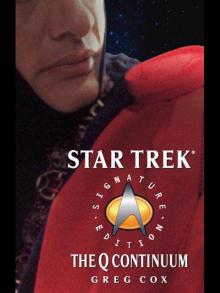 Q-Space
Q-Space Godzilla - the Official Movie Novelization
Godzilla - the Official Movie Novelization War for the Planet of the Apes: Official Movie Novelization
War for the Planet of the Apes: Official Movie Novelization Underworld: Evolution
Underworld: Evolution Underworld
Underworld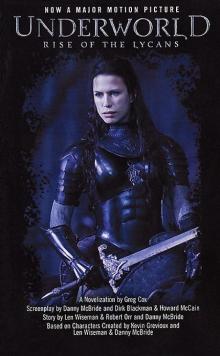 Rise of the Lycans
Rise of the Lycans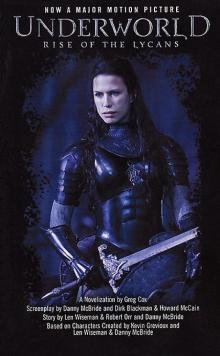 04 - Rise of the Lycans
04 - Rise of the Lycans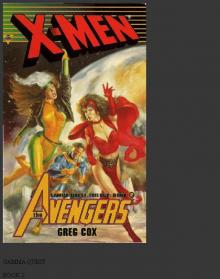 X-Men and the Avengers: Search and Rescue
X-Men and the Avengers: Search and Rescue Child of Two Worlds
Child of Two Worlds Welcome to Promise City
Welcome to Promise City The Librarians and the Mother Goose Chase
The Librarians and the Mother Goose Chase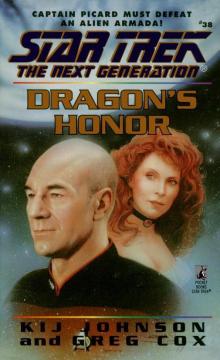 Dragon's Honor
Dragon's Honor 03 - Evolution
03 - Evolution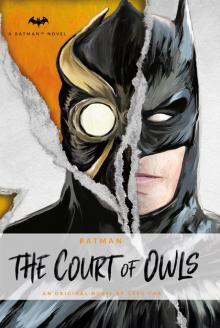 DC Comics novels--Batman
DC Comics novels--Batman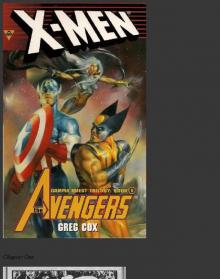 X-Men and the Avengers: Lost and Found
X-Men and the Avengers: Lost and Found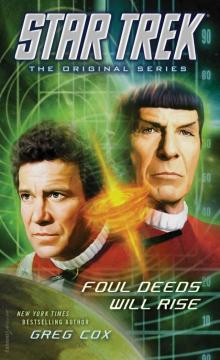 Foul Deeds Will Rise
Foul Deeds Will Rise 02 - Blood Enemy
02 - Blood Enemy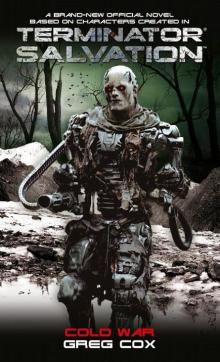 Terminator Salvation: Cold War
Terminator Salvation: Cold War The Weight of Worlds
The Weight of Worlds The Antares Maelstrom
The Antares Maelstrom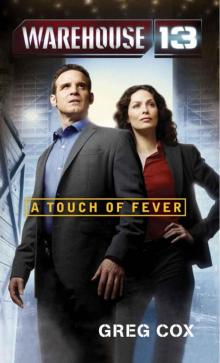 Warehouse 13: A Touch of Fever
Warehouse 13: A Touch of Fever Underworld: Blood Enemy
Underworld: Blood Enemy The Rise and Fall of Khan Noonien Singh
The Rise and Fall of Khan Noonien Singh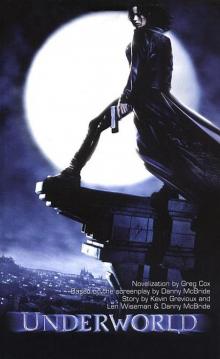 01 - Underworld
01 - Underworld The 4400- the Vesuvius Prophecy
The 4400- the Vesuvius Prophecy Assignment: Eternity
Assignment: Eternity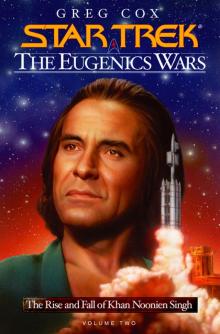 The Eugenics Wars, Vol. 2: The Rise and Fall of Khan Noonien Singh
The Eugenics Wars, Vol. 2: The Rise and Fall of Khan Noonien Singh The Dark Knight Rises: The Official Novelization
The Dark Knight Rises: The Official Novelization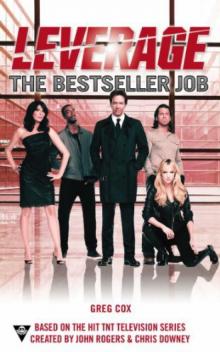 The Bestseller Job
The Bestseller Job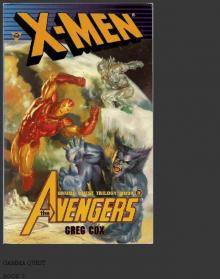 X-Men and the Avengers: Friend or Foe?
X-Men and the Avengers: Friend or Foe?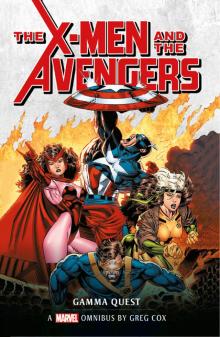 Marvel Classic Novels--X-Men and the Avengers
Marvel Classic Novels--X-Men and the Avengers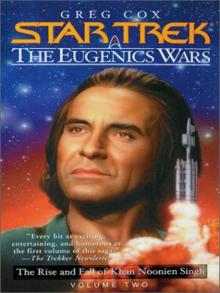 STAR TREK: TOS - The Eugenics Wars, Volume Two
STAR TREK: TOS - The Eugenics Wars, Volume Two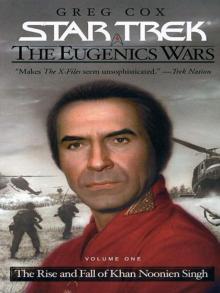 STAR TREK: TOS - The Eugenics Wars, Volume One
STAR TREK: TOS - The Eugenics Wars, Volume One The Black Shore
The Black Shore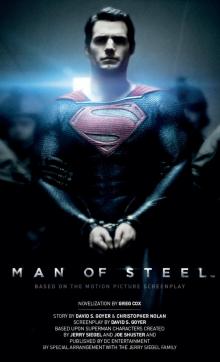 Man of Steel: The Official Movie Novelization
Man of Steel: The Official Movie Novelization Loose ends r-1
Loose ends r-1 Legacies
Legacies The Eugenics Wars, Volume Two
The Eugenics Wars, Volume Two Star Trek: The Original Series - 148 - The Weight of Worlds
Star Trek: The Original Series - 148 - The Weight of Worlds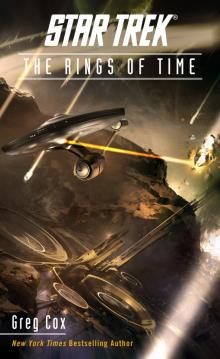 Star Trek: The Original Series: The Rings of Time
Star Trek: The Original Series: The Rings of Time Godzilla--The Official Movie Novelization
Godzilla--The Official Movie Novelization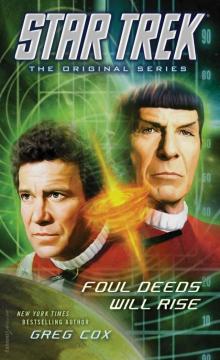 Star Trek: The Original Series - 160 - Foul Deeds Will Rise
Star Trek: The Original Series - 160 - Foul Deeds Will Rise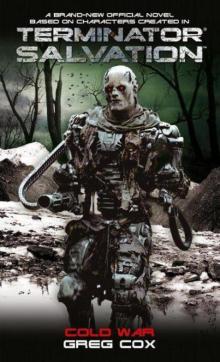 Terminator Salvation: Cold War ts-3
Terminator Salvation: Cold War ts-3 Star Trek: The Original Series: Miasma
Star Trek: The Original Series: Miasma Star Trek: The Original Series: No Time Like the Past
Star Trek: The Original Series: No Time Like the Past Child of Two Worlds (Star Trek: The Original Series)
Child of Two Worlds (Star Trek: The Original Series) THE 4400® WELCOME TO PROMISE CITY
THE 4400® WELCOME TO PROMISE CITY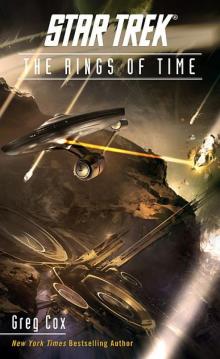 Star Trek: The Original Series: The Rings of Time (star trek: the original series)
Star Trek: The Original Series: The Rings of Time (star trek: the original series) To Reign in Hell: The Exile of Khan Noonien Singh
To Reign in Hell: The Exile of Khan Noonien Singh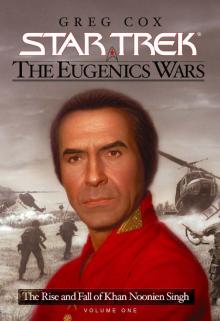 Star Trek: The Eugenics War, Vol. 1
Star Trek: The Eugenics War, Vol. 1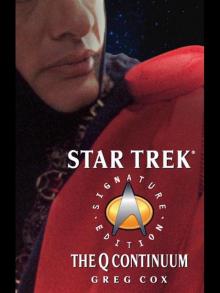 The Q Continuum
The Q Continuum